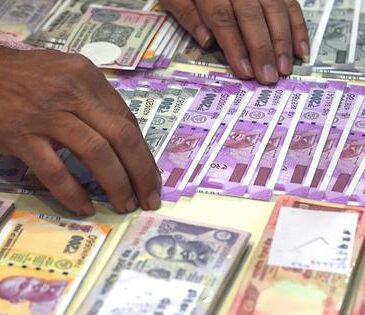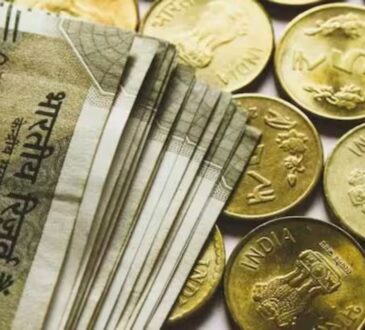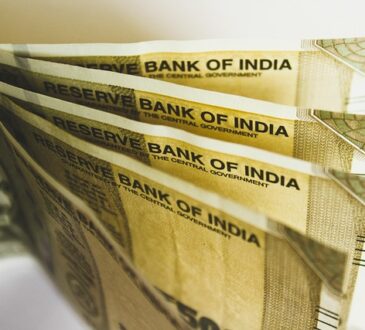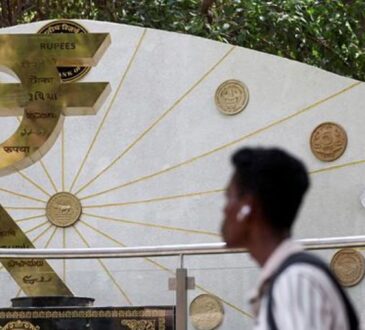- Indian Rupee recovers in Monday’s early European session.
- Stronger GDP data from India supports the INR, but higher oil prices and RBI rate cut bets might cap its upside.
- Traders await the US May ISM Manufacturing PMI data later on Monday ahead of the RBI rate decision.
The Indian Rupee (INR) rebounds on Monday, snapping the four-day losing streak. The upbeat India’s Q1 Gross Domestic Product (GDP) report boosts equities and lifts the local currency both via portfolio inflows and sentiment.
Nonetheless, a rise in crude oil prices might drag the Indian currency lower. It’s worth noting that India is the world’s third-largest oil consumer, and higher crude oil prices tend to have a negative impact on the INR value. Additionally, the rising expectation that the Reserve Bank of India (RBI) will deliver a third straight 25 basis points (bps) rate cut to boost growth might cap the INR’s upside in the near term.
Looking ahead, traders will keep an eye on the US May ISM Manufacturing Purchasing Managers’ Index (PMI) report, which is due later on Monday. On Friday, the RBI interest rate decision and the US Nonfarm Payrolls (NFP) data will be in the spotlight.
Traders will also closely monitor a trade negotiation between the United States (US) and India, which is officially expected to conclude by fall. US President Donald Trump slapped tariffs of up to 27% on Indian goods on April 2 and a 90-day tariff pause on these ends on July 9.
Indian Rupee strengthens on upbeat India’s GDP report
- India’s economy grew by 7.4% YoY in the first quarter of 2025, up from 6.2% the previous quarter and significantly beating analyst expectations of 6.7%.
- India remains the world’s fastest-growing major economy, though growth has sharply declined from the 9.2% high recorded in the financial year 2023-24.
- Net Foreign Direct Investment (FDI) into India declined to $0.35 billion in 2024-25, the lowest level in two decades, as rising outbound foreign investment and repatriation by Indian enterprises offset the inbound investment.
- The Indian rupee is emerging as Asia’s worst performer this quarter and may continue to lag peers as the RBI aims to avert a depletion in its foreign exchange reserves, according to analysts.
- India’s foreign exchange reserves stood at about $693 billion as of May 23, down from the all-time high of $705 billion reached in September last year.
- The US Personal Consumption Expenditures (PCE) Price Index rose 2.1% year on year in April, compared to 2.3% in March, the US Bureau of Economic Analysis showed on Friday. This figure came in below the market consensus of 2.2%.
USD/INR keeps the bearish tone in the longer term
The Indian Rupee trades in positive territory on the day. The USD/INR pair remains capped below the key 100-day Exponential Moving Average (EMA) on the daily timeframe, indicating that the path of least resistance is to the downside. In the near term, further consolidation cannot be ruled out, with the 14-day Relative Strength Index (RSI) hovering around the midline.
USD/INR seems to be finding initial support at 84.78, the low of May 26. A break below the mentioned level could set off a drop toward 84.61, the low of May 12. The next bearish target to watch is 84.00, the psychological level and the lower limit of the trend channel.
On the other hand, the key resistance level for the pair emerges in the 85.55-85.65 zone, representing the 100-day EMA and the upper boundary of the trend channel. Any follow-through buying could see a rally to 86.10, the high of May 22.
RBI FAQs
The role of the Reserve Bank of India (RBI), in its own words, is “..to maintain price stability while keeping in mind the objective of growth.” This involves maintaining the inflation rate at a stable 4% level primarily using the tool of interest rates. The RBI also maintains the exchange rate at a level that will not cause excess volatility and problems for exporters and importers, since India’s economy is heavily reliant on foreign trade, especially Oil.
The RBI formally meets at six bi-monthly meetings a year to discuss its monetary policy and, if necessary, adjust interest rates. When inflation is too high (above its 4% target), the RBI will normally raise interest rates to deter borrowing and spending, which can support the Rupee (INR). If inflation falls too far below target, the RBI might cut rates to encourage more lending, which can be negative for INR.
Due to the importance of trade to the economy, the Reserve Bank of India (RBI) actively intervenes in FX markets to maintain the exchange rate within a limited range. It does this to ensure Indian importers and exporters are not exposed to unnecessary currency risk during periods of FX volatility. The RBI buys and sells Rupees in the spot market at key levels, and uses derivatives to hedge its positions.




